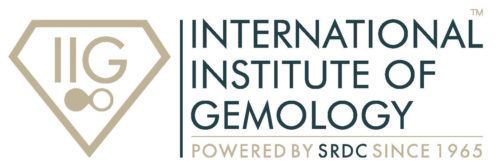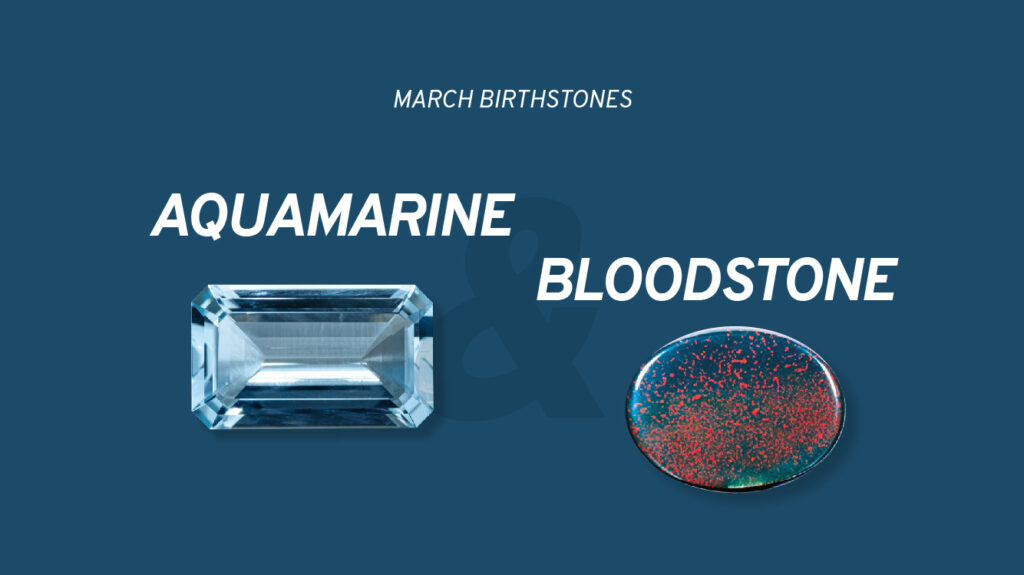|
Getting your Trinity Audio player ready...
|
The two birthstones of March, aquamarine and bloodstone, are very different in their appearance. Aquamarine ranges from deep green-blue to light greenish-blue hues. Bloodstone is a dark green cabochon containing red spots of iron oxide. Both March birthstones are known for offering protection and well-being to the wearer. Read the entire blog to learn more about these fascinating gemstones.
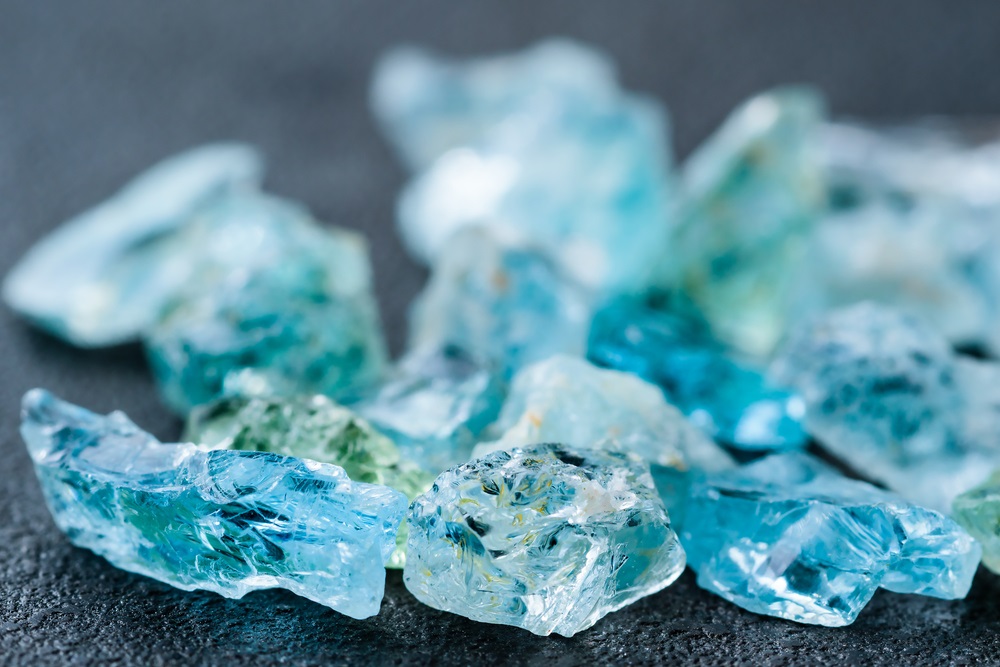
History of Aquamarine
The word ‘aquamarine’ comes from the Latin words “aqua” and “marina” which means the colour of the sea. Faceted aquamarines are typically free from inclusions, giving them a clear watery appearance, making them stand as a symbol of spiritual purity. Ancient mariners believed that this march birthstone kept the sailors safe at sea by calming down the waves. It is also thought to promote happy marriage.
Minas Gerais of Brazil has been one of the major sources of aquamarine for the past two centuries. It is also found in the Karakorum foothills of Pakistan at a higher altitude. This “water clear” birthstone is also mined in certain places of Africa, the US, Russia, China, Myanmar, and Ukraine.

Characteristics of Aquamarine
Aquamarine’s hardness ranges from 7.5 to 8 on Moh’s scale, making it durable to wear every day. It is a gem-quality specimen of the mineral beryl, that ranges from greenish blue to blue. While most of the aquamarine is of very light colour, those with a rich blue tone are highly rare and valuable. This March birthstone can be found in both transparent and translucent varieties.
Cleaning and Caring of Aquamarine
It is quite a durable gemstone, so its cleaning and caring are comparatively easy. Mild dish soap, warm water, and a toothbrush can be used to scrub the backside of the stone. Ultrasonic and steam cleaning is safe and appropriate to clean aquamarines that are free of liquid inclusions or fractures.
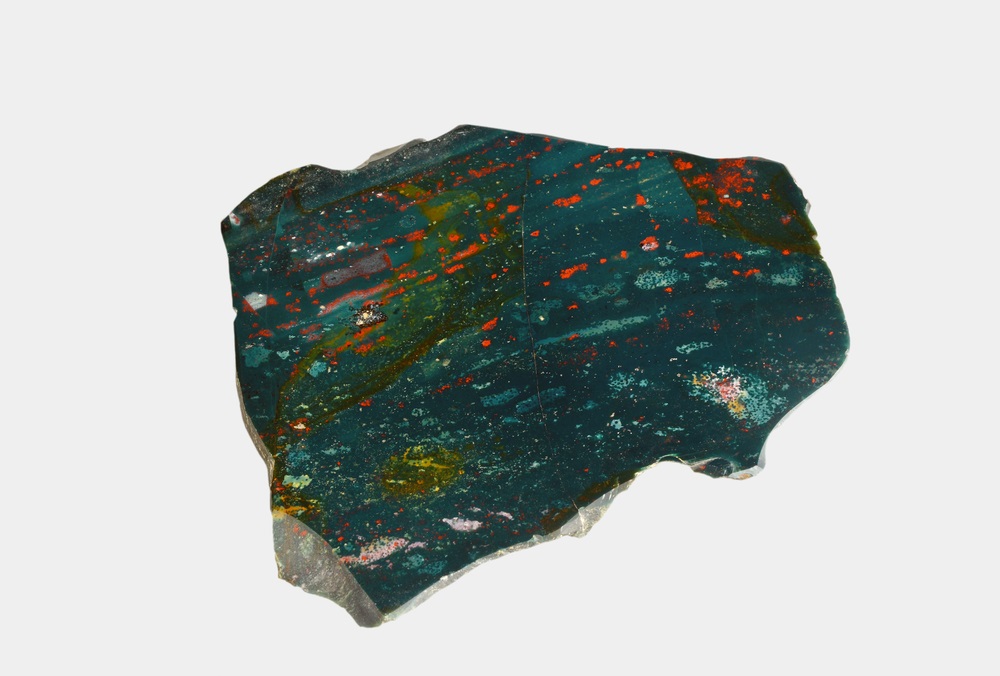
History of Bloodstone
Bloodstone, also known as heliotrope, is believed to have religious significance in Christianity due to its red colour pattern that represents the blood of Christ. The word ‘heliotrope’ comes from Greek, which means “to turn the sun”. This March birthstone was believed to turn the sun red when placed in water in ancient times. It also stands as a symbol of strength and perseverance of youthful health. In modern times, it is considered a lucky charm for athletes and anyone who aspires for increased strength. This is why it is crushed into powder and used as an aphrodisiac in India.
India is one of the leading marketplaces of bloodstone. Other major sources of this March birthstone include China, Australia,US, and Brazil.
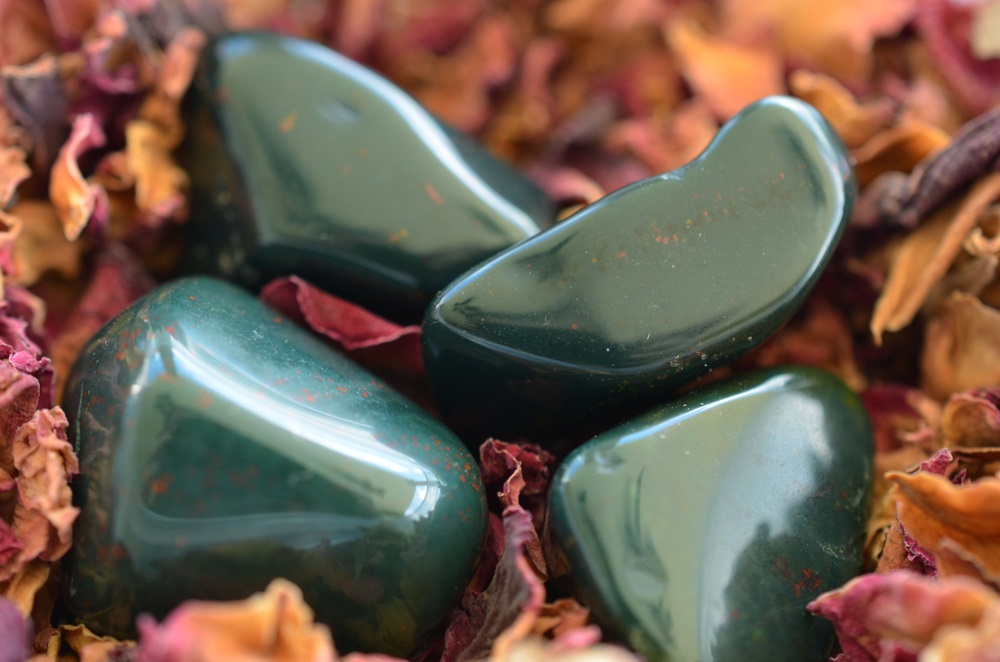
Characteristics of Bloodstone
Bloodstone is a variety of chalcedony that is semi-translucent to opaque dark green jasper. It also possesses red inclusions. It ranges from 6.5 to 7 on Moh’s scale of hardness, making it prone to scratching. It is also found filling cavities or fractures in pebbles and other rock stones in riverbeds.
Caring and Cleaning of Bloodstone
Bloodstone can be easily cleaned with a soft brush and warm soapy water, by further drying it off with soft, clean cloth. Bloodstone is sensitive to harsh chemicals and extremely hot temperatures. As it is prone to getting scratched, it is safe to store in a soft fabric.
Stay tuned for more information on birthstones and other knowledgeable insights!
